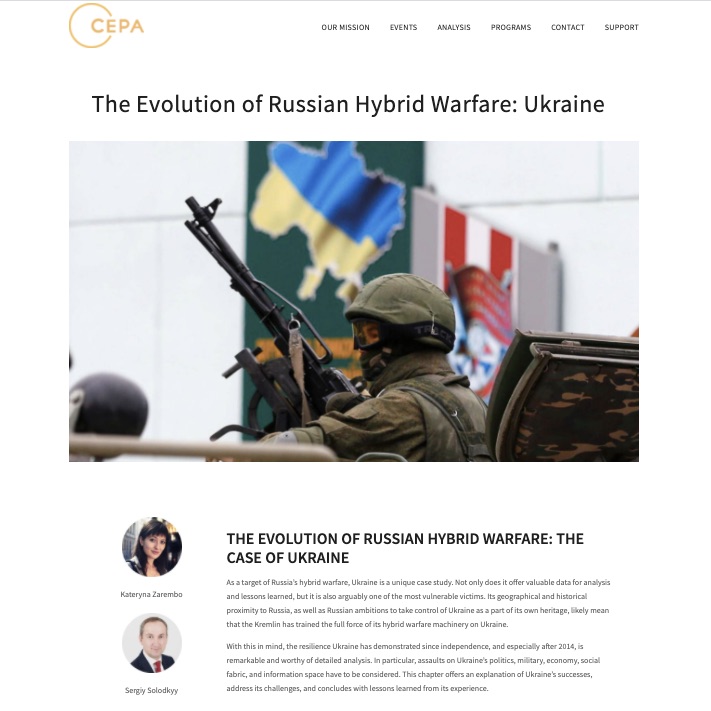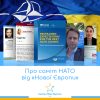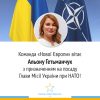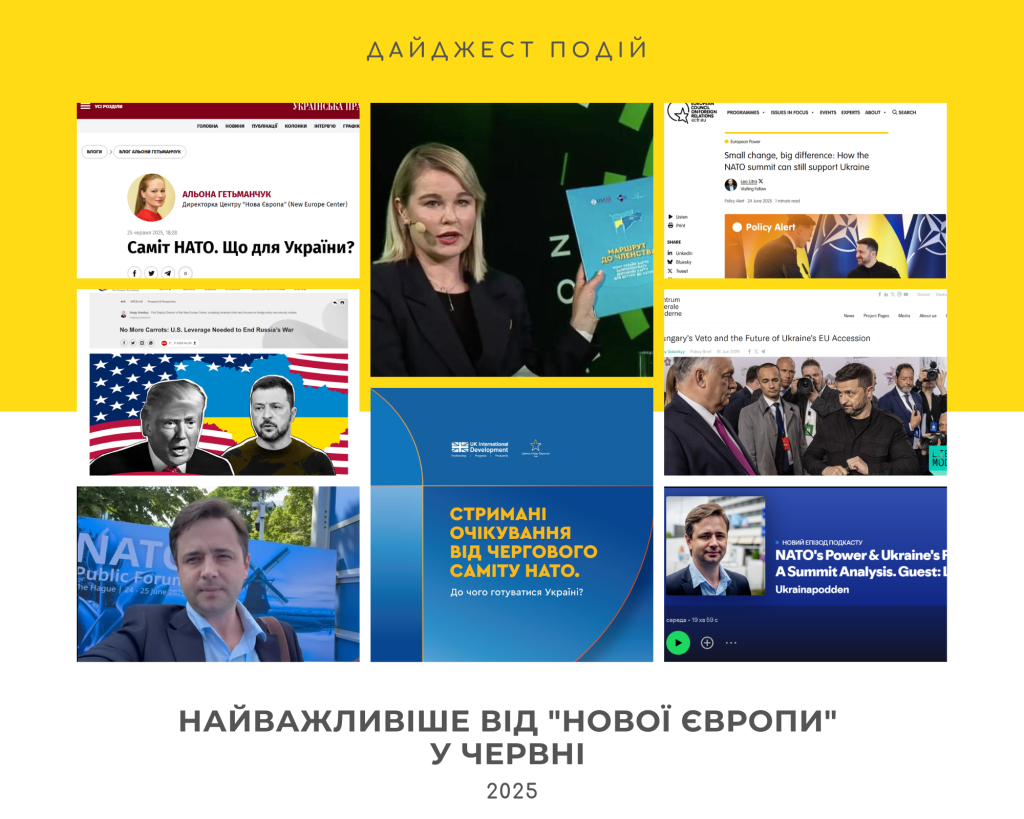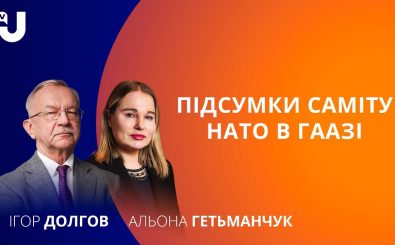How has the methods of Russian hybrid warfare evolved? Sergiy Solodkyy, First Deputy Director of the New Europe Center, and Kateryna Zarembo, the New Europe Center Associate Fellow, analyzed the case of Ukraine as part of the study “The Evolution of Russian Hybrid Warfare” initiated by the American think tank Center for European Policy Analysis (CEPA). The paper was jointly written by the researchers from Ukraine, Estonia, the United Kingdom, as well as EU and NATO member states.
The Evolution of Russian Hybrid Warfare: Ukraine
As a target of Russia’s hybrid warfare, Ukraine is a unique case study. Not only does it offer valuable data for analysis and lessons learned, but it is also arguably one of the most vulnerable victims. Its geographical and historical proximity to Russia, as well as Russian ambitions to take control of Ukraine as a part of its own heritage, likely mean that the Kremlin has trained the full force of its hybrid warfare machinery on Ukraine.
With this in mind, the resilience Ukraine has demonstrated since independence, and especially after 2014, is remarkable and worthy of detailed analysis. In particular, assaults on Ukraine’s politics, military, economy, social fabric, and information space have to be considered. This chapter offers an explanation of Ukraine’s successes, address its challenges, and concludes with lessons learned from its experience.
1. RUSSIA’S HYBRID TOOLS OF AGGRESSION AGAINST UKRAINE
Russia has used conventional military means against Ukraine, but it has added a few twists to further frustrate and exhaust its victim. Russian troops, who even during the most sweeping of military operations against Ukraine in 2014-2015 were dressed in Russian military green uniforms without insignia and chevrons, were labeled “green men.”1 But there was no official declaration of war or even an admission by the Russian government that it had sent soldiers to Ukraine. Russian President Vladimir Putin acknowledged that his country’s troops had occupied Crimea only after the special operation was over.2
Meanwhile, the Russian leadership has never acknowledged the presence of Russian troops in eastern Ukraine, although the evidence shows that Russia has sent modern arms and troops to the fight. The Kremlin has played word games to whitewash its violations of international law, claiming, for instance, that Russian soldiers “got lost” and found themselves in the war zone.3 Another time, when members of Russian special forces were captured in Ukraine, Putin averred that Russia “has never said that there were no people who are engaged in solving certain issues, including in the military sphere.”4
As for the presence of their weapons in Ukraine’s occupied territories, Russian officials have said that perhaps fighters had seized them from the Ukrainian army or had somehow acquired them on their own. In another example of hybridity, mercenaries from the so-called Wagner Group — a Russian paramilitary formation that has fought in global conflicts, including in Syria and probably in Sudan and the Central African Republic — have turned up in Ukraine.5
Just as energetically, and despite the international inquiry, Russia denies that its troops shot down a Malaysia Airlines passenger plane over Ukraine in July 2014. One of Russia’s arguments is that Ukraine was obliged to close the airspace in the war zone. Russia has also blocked efforts to set up an international tribunal and ignored major requests from investigators in the Netherlands, undermining and slowing the probe. Russia is trying to shift responsibility from itself to Ukraine, even when the evidence unequivocally proves Russia’s guilt.
The primary goal of Russia’s military operations at this stage is to keep Ukrainians demoralized and stressed from the ever-present threat of ramped-up aggression. By keeping the war on a steady simmer, Russia feeds the frustration and resentment that it hopes Ukrainians will gradually direct at their own politicians. That anger gives rise to suspicions that, for example, Ukrainian politicians are not interested in ending the war, possibly profit from it, or are using it to antagonize pro-Russia voters.6 In this way, the prolonged conflict sows chaos in Ukraine’s politics and gives a boost to movements that seemed either marginal or even hostile to Ukraine five years ago.
Political tactics are among the most significant weapons in the hybrid warfare arsenal. Russia’s most obvious use of them in Ukraine is its support for the leaders of the Opposition Platform – For Life (Opozytsiyna platforma – Za zhyttia, OPZZh) party, who call for closer relations between Ukraine and Russia. Party leader Viktor Medvedchuk has never hidden his friendly ties with Putin, who is the godfather of his daughter.7 One of Ukraine’s richest politicians, with assets estimated at $133 million,8 Medvedchuk headed the presidential office of then-Ukrainian President Leonid Kuchma in the early 2000s, when Ukraine’s relations with the West were strained over persecution of the political opposition and independent media. Medvedchuk held no position in the governments of Presidents Viktor Yushchenko (2005-2010), Viktor Yanukovych (2010-2014), or Petro Poroshenko (2014-2019), but he was still considered a prime mover behind the scenes and nicknamed the Gray Cardinal.9
When Russia began its incursions into Ukraine in early 2014, Medvedchuk took on the role of negotiator with representatives of Russia-controlled members of militarized groups in the Donbas. According to a report from Espresso TV, German Chancellor Angela Merkel, after reportedly being asked by Putin, appealed to Poroshenko to involve Medvedchuk in the talks.10 Medvedchuk turned out to be a key player in negotiations for the release of Ukrainian hostages held captive in Russia or in prisons in Russia-controlled Crimea and eastern Ukraine.
Political tools currently play a key role in influencing the situation in Ukraine. The presidential and parliamentary elections in 2019 showed considerable public support for politicians who could find peaceful solutions with Russia.11 However, Ukrainians were still not ready to massively support those politicians who are extremely pro-Russia. Medvedchuk enjoys little popularity in Ukraine, and his party’s support is purely regional. Pro-Russia forces would have had much more opportunity to influence the political agenda had Russia not occupied territories most loyal to such politicians.
The economic dimension of hybrid warfare is equally relevant to this discussion. Ukraine suffered economic blows on several fronts, including lost industries in Crimea and the east, direct costs of the war, lost trade with Russia, and Russia-imposed punitive measures from import bans to economic sanctions against individuals. As a result, after 2014 trade between Russia and Ukraine dropped by 75% and, according to Ukrainian economists, has fallen back to its early-2000s level. All of these problems helped shrink Ukraine’s economy, with GDP dropping from $183 billion in 2013 to $91 billion in 2015, reaching $153 billion in 2019.12
Energy trade is a major component of economic warfare. Russia has worked to undermine Ukraine’s reliability as an energy transit country, most notably by shutting off the flow of gas to Central and Eastern Europe in the winter of 2009 over a pricing dispute with Ukraine. It has also pushed forward with work on the Nord Stream 2 undersea pipeline to Germany, which would bypass Ukraine and weaken the country’s leverage as an energy transit partner in dealings with Russia.
Attacks on Ukraine’s social fabric and information space are closely linked. The Institute for the Study of War’s Mason Clark has written that Russian strategists consider information operations “the most important sphere of military operations, as both an independent battlefield and an enabler of successful kinetic actions.”13 Clark also writes that “the Russian military views this new relationship between information and kinetic operations as a two-way street: kinetic operations are now inherently subordinate to the information campaign of a hybrid war; no kinetic operation can succeed unless it is nested in and enabled by the overall information campaign.”14 This strategy translates into a hybrid war in which society is as much a target as the central government or military. Depending on the circumstances, Russia employs the tools that seem most appropriate for the purpose and timing: different phases of Russian hybrid warfare are characterized by different instruments.
In Ukraine, information warfare in traditional media is waged less through Russian networks, which reach only 9% of the population,15 than through local channels. For example, the NewsOne, 112 Ukraine, and Zik television channels belong to Taras Kozak, a former member of parliament from the Opposition Bloc who is said to be a close Medvedchuk ally.16 And, of course, the Kremlin makes liberal use of trolls and bots on social media in Ukraine, as it does around the globe.
The aim of Russia’s information strategy is not so much to make Ukrainians look kindly on Russia as to sow distrust and instability within the country, to delegitimize the government, and to drive wedges between the people and the authorities, and between various groups in society and politics. There are several examples of Russia’s hybrid warfare in Ukraine — such as support for attacks on minorities to instigate interethnic violence or accusations against Poroshenko of profiting from his chocolate factory in the Russian city of Lipetsk while the then-president’s company insisted that profits from the plant actually went for taxes and charities in Ukraine.17 Some Ukrainians fear that if civil unrest were to break out, Russia would use it as a pretext for military intervention as a “peacekeeper,” which would eventually lead to a total loss of sovereignty. These fears have been voiced for years since Russian aggression against Ukraine started in 2014.18
But sometimes Russia’s strategy is self-defeating. One effect of its hybrid warfare in Ukraine has been to build domestic support for Ukraine joining the European Union (EU) and NATO. Prior to Russia’s seizure of Crimea and military actions in eastern Ukraine, the country had been split on the question of accession to either organization. Russia’s belligerence has so outraged Ukrainians that now almost half support membership in NATO, a record high, and almost 60% favor joining the EU (26.9% oppose joining the EU and 32.8% oppose joining NATO, according to the poll conducted by SOCIS and Razumkov Center in July 2020).19 Russia has unwittingly helped clarify some thinking in Ukraine and eased a long-standing source of disagreement.

Demonstrators gather at a barricade near Independence Square where pro-European integration protesters are holding a rally in central Kiev, December 12, 2013. Ukrainian protesters stood their ground after a sweep by riot police and their leaders dismissed an offer of talks from a president they say must quit for favoring ties with Russia over the European Union. REUTERS/Alexander Demianchuk
2. THE PHASES OF RUSSIA’S HYBRID WARFARE AGAINST UKRAINE
A constant in Ukraine and Russia’s frequently turbulent relationship has been Russia’s view of its neighbor as an extension of itself that was never meant to be independent. There have long been politicians in Moscow who speak of Ukraine as a territory of Moscow’s “privileged interest,” and Russia’s top leadership has sincerely regretted the collapse of the Soviet Union.20
Russian elite make great efforts to thwart Ukraine’s development as a full-fledged state. For example, Russia ratified the “Big Treaty” (the Treaty on Friendship, Cooperation, and Partnership), which provides for the inviolability of Ukraine’s borders, in December 1998, nearly a year after Ukraine had done so. Russian diplomats also repeatedly delayed negotiations on delimiting the countries’ shared borders so that an agreement was not signed until 2010, almost 20 years after Ukraine gained independence. The two countries still have not been able to agree on the division of the maritime space, and the Russian occupation of Crimea ensures that they will not do so any time soon.
Looking over the past three decades, we can discern at least four stages of Russia’s political influence on Ukraine. First came the preparatory phase, which covers the period from the collapse of the Soviet Union to the beginning of the military operation against Ukraine that Russia launched in February 2014. The second stage was the failed blitzkrieg, when Russia moved to take control of Ukraine’s south and east, including Crimea. This stage, which lasted until early 2015, was a turning point because it saw the most intensive involvement of Russian armed forces.
The third stage began in February 2015, after the signing of the so-called Minsk II agreements, when Russia stepped up its use of political, economic, social, and information campaigns as it dialed back military operations. We are now witnessing the fourth phase of this hybrid war, which began in the spring of 2019 and is waged primarily through agents of influence in Ukraine. This period has seen growing support for political forces that promote concessions to Russia.
Clearly, Russian policy toward Ukraine has changed little since 1991. The Kremlin has never accepted the notion of an independent Ukraine, free to join the EU or NATO, which it is convinced would undermine its traditional influence in this part of the world. What has changed in the last three decades is how much the Kremlin relies on various means of influence to keep Ukraine under its thumb, culminating in Russia’s 2014 military attack on Ukraine.
2.1 PHASE 1: PREPARATION
To analyze the evolution of Russia’s hybrid war, it is important to consider the preparatory period, before the use of military force against Ukraine, because it allowed the Kremlin to test certain methods of coercion first. Thus, Moscow was aware of the Ukrainian army and security services’ weaknesses, especially in Crimea, where 90% of members of the Security Service of Ukraine (SBU) switched to the Russian side after the occupation.21 Russia also understood how to work in the information sphere. Russian television, which was especially popular in eastern and southern Ukraine, spread stories during the 2014 protests about a coup d’état in Kyiv by right-wing radicals who posed a threat to Russian-speaking citizens. In this way, the Russian government worked in advance to tamp down resistance among a frightened population to its coming incursions.
Moreover, Russia already had experience conducting special operations in Crimea, in particular during a dispute over tiny Tuzla island in the Kerch Strait in 2003 when Russia tried to connect the Ukrainian island with its Taman Peninsula, and the campaign of Yuri Meshkov, who was elected president of Crimea in 1994 after calling for the peninsula’s accession to Russia.
The Tuzla operation set the precedent for some special operations tactics in the framework of a hybrid war. For example, the Russian government dissociated itself from the construction of a dam to Tuzla that had precipitated the dispute, pointing the finger instead at local authorities. Despite diplomatic notes and harsh public statements, Russia remained silent. Only Ukraine’s coordinated position forced Russia to stop the dam construction right at the Soviet-era administrative border.22
Meshkov’s increasingly bold pro-Russia agitation, which ended with special forces invading his residence, and the Tuzla crisis are two of the better-known conflicts between Ukraine and Russia before the 2014 hybrid war, although there were many others, including “gas wars” over pricing, and Russia’s interference in Ukraine’s 2003 presidential election.
These episodes taught Moscow several important lessons:
- Special operations are best launched when the central government is particularly weak and vulnerable. The hybrid war in 2014 had early success as a power vacuum had formed in Kyiv after Yanukovych, who was president at the time, fled the capital.
- Support among local leaders, who can be disorganized and disruptive, for a special operation plays a secondary role. The Russian government must play a crucial, albeit covert, role in special operations.
- Trust between the Ukrainian authorities and its Western allies must be undermined. For instance, Ukraine successfully appealed to international partners during the Tuzla crisis in 2003. Statements by Western governments likely influenced the actions of Russia, which at the time seemed to value cooperation with international institutions. In 1993, the issue of ownership of Crimea was even discussed in the United Nations Security Council where Russian diplomats — who were allied with then-Russian President Boris Yeltsin against a revanchist parliament — supported Ukraine’s position.
- Crucially, do not accept responsibility for a hybrid, unconventional attack. Moscow declares its non-involvement in the action and thus avoids responsibility under international law. Hybrid provocation is also cheaper than a large, overt campaign.
2.2 PHASE 2 (2014-2015): FAILED BLITZKRIEG
The hybrid war just after Russia’s annexation of Crimea in March of 2014 included clear and coordinated Russian actions inside Ukraine, along with efforts to discredit the new government abroad. Russia aimed to carry out a kind of blitzkrieg, so things moved fast in Crimea and southern and eastern Ukraine.
But if Crimea was captured without a single shot fired, the rest of Ukraine began to resist the “Russkaya Vesna” (Russian Spring, a militarized allusion to the Arab Spring), which aimed at the secession of Ukraine’s regions. Ukraine’s government had been slow to react to developments in Crimea because it did not know if its army and special forces were ready to defend the country’s sovereignty, and because foreign allies urged Ukraine “to resolve the conflict peacefully” and not to “take hasty steps.”23
After the seizure of office buildings in eastern and southern Ukraine, Kyiv decided to use its military. Russia likely (and wrongly) had envisioned a bloodless operation in which part of Ukraine would be taken over by pro-Russia or Russian representatives. It did not expect this level of military reaction and massive public resistance, which forced the leadership to change its initial plans.
2.3 PHASE 3 (2015-2019): LOW-INTENSITY CONFLICT AND OTHER MEANS
After the Minsk agreements in February 2015, Russia pivoted to a low-intensity military conflict in the east combined with hybrid attacks on the rest of Ukraine. Its moves served primarily to destabilize Ukraine and discredit Ukraine’s leaders in the eyes of their people and their Western partners. Russia’s policy changed due to the introduction of EU and U.S. sanctions as well as the signing of the Minsk agreements. Russia was interested in their implementation, as they would effectively allow Ukraine’s federalization and legitimization of Russia’s “stooges” among the local elite. In addition, maintaining a low-intensity hybrid conflict is militarily cheaper than a full-scale one.
To begin with, the GRU, Russia’s military intelligence service, and the FSB, Russia’s domestic intelligence agency, have carried out dozens of special operations in Ukraine, which have been meticulously documented by researchers.24 These include attacks on critical infrastructure and armament depots, and assassinations of members of Ukraine’s security services, soldiers, and Russian dissidents who had fled to Ukraine.25 There have also been more subtle information attacks, such as a phone call between the Ukrainian and Russian presidents Petro Poroshenko and Vladimir Putin that the Russians leaked in order to stir up distrust of the Ukrainian head of state.26 As for “conventional” espionage, there was the Russian spy Stanislav Yezhov who served as an interpreter to the Ukrainian prime minister.27
In addition, the Ukrainian security service has said Russian agents were behind attacks on ethnic minorities in Ukraine, including Roma, Jews, Hungarians, and Rusyns, with the goal of instigating interethnic tensions and violence.28
Cyberattacks have also been central to Russian hybrid warfare. In 2018 alone, the SBU reported some 360 known cyberattacks against Ukraine, and in 2019, the number approached 500.29 In the lead-up to the presidential election in 2019, Ukraine braced for more cyberattacks, especially against its Central Election Committee. While the election took place without major disruptions, some Ukrainian officials counted as many as one cyberattack every 40 minutes against certain Ukrainian institutions. NATO specialists trained their Ukrainian partners to counter cyberattacks ahead of the country’s local elections in 2020.30
Fakes and disinformation have also become integral to Russia’s hybrid warfare. As just one instance, an analysis by Internews Ukraine of the Ukrainian segment of the Russian social network VKontakte ahead of the 2019 presidential election found a largely negative portrayal of both the presidential candidates and Ukraine as a dysfunctional state.31
All the while, Ukrainians have lived under the constant threat of further military aggression. From 2015 to 2019, Russia violated the cease-fire negotiated by the Minsk Trilateral Contact Group more than 20 times,32 including in the first hours after it was proclaimed. Russia also regularly holds military exercises close to Ukrainian territory and amasses its military units along the Ukrainian border and in occupied Crimea, combining hybrid means of aggression with psychological pressure.33
One lesson the Kremlin has repeatedly drawn from its warfare against Ukraine is to avoid open aggression, which does not allow it to deny responsibility for the armed conflict and mobilizes Ukrainian public opinion against Russia as well as Western support for Ukraine. For example, it was only after the open aggression in 2014 that support for the union with Russia among Ukrainians dropped radically: from 30% in May 2013 to 21.4% in May 2014 to 7.8% in June 2017 (according to a poll conducted by the Ilko Kucheriv Democratic Initiatives Foundation).34 As for Western support, a relevant example relates to Russia’s November 2018 attack on and seizure of three Ukrainian navy vessels in the Kerch Strait. This incident prompted the EU to open a field office of its advisory mission (EUAM) in Mariupol, a step that EU countries had strongly opposed earlier as too sensitive for EU policy regarding the conflict in the east.35
2.4 PHASE 4 (2019-PRESENT): IS RUSSIAN SOFT POWER BACK?
A change in Ukraine’s leadership in 2019 might have presented Russia an opportunity to change its approach to its neighbor. Instead, while Ukraine’s new president, Volodymyr Zelenskyy, adopted some different policies toward Russia, the Kremlin kept to relatively the same tactics. The only noteworthy difference is that conditions in Ukraine have provided more opportunities for hybrid influence.
In the first place, pro-Russia political forces have gained ground in Ukraine, as over time ties to Russia have become less disqualifying in the country’s politics. For example, the Opposition Platform – For Life party won 43 seats in parliament in 2019, up from 29 seats in 2014, even after two of its members, Medvedchuk and pro-Russia oligarch and energy tycoon Yuriy Boyko, met with then-Russian Prime Minister Dmitriy Medvedev four months earlier. In fact, it was in 2019 that Medvedchuk made a comeback in Ukraine’s national politics, running on the Opposition Platform party list and becoming a member of parliament.
Since the election, the initial trust that Ukrainians had placed in Zelenskyy’s victorious Servant of the People party has dwindled, while the Opposition Platform has gained support. A recent opinion poll found that if parliamentary elections were held in November 2020, the Opposition Platform and European Solidarity parties would have shared second place, each with roughly 16% of the vote, an unimaginable result back in 2014.36 Even some notorious pro-separatist politicians in eastern Ukraine — for instance, Nelia Shtepa, a former mayor of the city of Sloviansk who was arrested in 2014 on charges of violating Ukraine’s territorial integrity but later released without trial — fared decently in the 2020 local elections, coming third with 16.6% of the vote.
The Kremlin’s tactics, though, aim not so much to install a pro-Russia government in Kyiv as to destabilize Ukraine until it becomes the failed state that Russian propaganda has long claimed it to be. The most recent example of such an approach appeared in October 2020 when the Constitutional Court, acting on the Opposition Platform’s appeal, ruled e-declarations by public officials to be unconstitutional. Not only was the introduction of e-declarations for public officials considered to be the one of the key post-Maidan anti-corruption measures, the court’s ruling threw Ukraine in a constitutional crisis. Indeed, any action against the ruling or the court itself could undermine the separation of powers and start a spiral of illegality, not to mention jeopardize Ukraine’s relations with its Western partners. One can only hypothesize whether the idea was concocted in the Kremlin given that the appeal was submitted by the chief pro-Russia party. Be that as it may, the outcome serves Russian interests well.
In the armed conflict, the most notable recent change has been the replacement of Vladislav Surkov, a former aide to Putin and the Kremlin’s informal chief of propaganda, by Dmitriy Kozak as the stage manager of Russia’s involvement in Ukraine. Kozak is best known as the champion of a failed Russian plan for Moldova in 2003 that would have made concessions to separatists in the country’s Transnistria region but would have reunited both sides in a federation (and which Moldova’s then-President Vladimir Voronin pulled out of right before the expected signature).37
The change of personalities in Moscow has not translated into a change in policy as yet. The Kremlin has so far manipulated the conflict-settlement process to its own advantage, winning back some crucial figures captured by the Ukrainian security services in prisoner exchanges, including Vladimir Tsemakh, suspected of downing the Malaysia Airlines plane in 2014.
Some Ukrainian journalists have alleged Zelenskyy’s office and the SBU sabotaged some special operations, including the capture of Russian mercenaries from the Wagner Group who are reportedly fighting in eastern Ukraine.38 While these allegations have not been proven, they feed suspicion and distrust toward the authorities.
Some analysts predict that the Kremlin will try to destabilize Ukraine through regional referendums. Zelenskyy is trying to change Ukrainian law to permit such referendums.39 This idea is consistent with the Kremlin’s strategy in Ukraine.
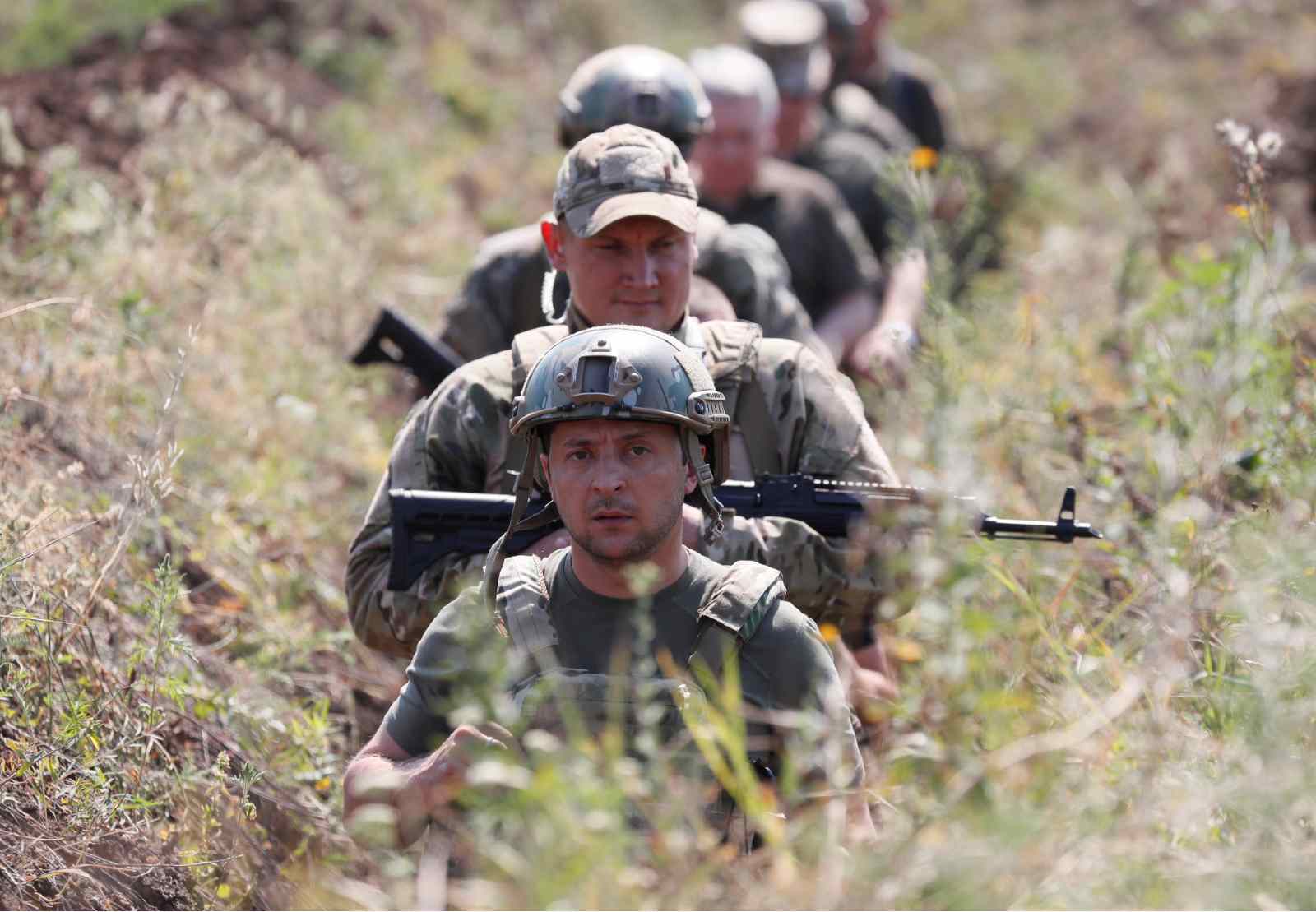
Ukraine’s President Volodymyr Zelenskiy and servicemen walk in a trench near the frontline with Russian-backed separatists in Krasnohorivka in Donetsk Region, Ukraine August 7, 2020. REUTERS/Gleb Garanich
3. UKRAINE’S RECIPES FOR RESILIENCE
3.1 WHAT HAS WORKED…
Ukraine’s success in countering Russia’s hybrid war is difficult to assess. The Kremlin continues efforts to shape Ukraine’s domestic and foreign policy agendas in a conflict intended to exhaust Ukrainian resources and cause enough economic or societal havoc that Kyiv will be forced to make concessions.
It is impossible to know how the conflict would have developed had the West not supported Ukraine, or how Russia would have acted and how Ukraine would have fared had the government in Kyiv not sent the army to meet Russian aggression in the Donbas in 2014. Still, we can draw certain lessons from Ukraine’s experience.
Reforms are key to Ukraine’s ability to withstand Russia’s hybrid warfare. Ukraine’s desire to join the EU and NATO adds fuel to the country’s efforts to root out corruption and strengthen the rule of law, while hybrid wars are more effective in countries where institutions are weak and elite corrupt. Thus the Ukrainian government has set a course to reform those areas that can counter Russian aggression directly, such as defense, and those that affect its security and resilience more generally (fight against corruption, rule of law, decentralization, etc.). It has faced an extraordinary challenge due to a shortage of honest politicians and funds.
As many have noted, Ukraine is forced to wage two wars simultaneously: one on its eastern front to stop Russian attacks and the other at the national level to push through reforms opposed by an old guard of bureaucrats and oligarchs.40 Independent assessments have credited Ukraine with making significant improvements in its defense capabilities. The Ukrainian army has come a long way toward reaching interoperability with the armies of NATO countries, and it has gained valuable experience in its conflict with Russia.41
Contacts between Ukrainian and Western officials have played an important role in deterring further Russian aggression. Keeping its Western partners (above all, Germany, France, and the United States) involved in mediation and holding Russia accountable has been one of Ukraine’s biggest achievements in dealing with the conflict. It has been crucial that Germany and France have led negotiations with Russia under the Normandy Format. They have supported Ukraine on key matters, such as insisting that eastern Ukraine be demilitarized before any new political arrangements, or “special status,” for the embattled regions can be made. Another important point is that EU and U.S. sanctions against Russia clearly signal who the aggressor is, even if the aggressor itself denies its involvement.
Another less publicized but important backstop has been support for Ukraine in international tribunals, including the International Court of Justice (ICJ) and the International Tribunal for the Law of the Sea. An interim success for Ukraine came in November 2019 when the ICJ ruled that its claims against Russia are proper and within the court’s jurisdiction.42 Ukraine filed its case back in 2017, accusing Russia of violating international agreements against racial discrimination and financing terrorism. It took the Ukrainian side three years to prepare 29 volumes and more than 17,500 pages of evidence against Russia.
Also contributing to Ukraine’s resilience is its civil society. Groups such as Come Back Alive, which provides equipment, medical supplies, and training to the army, and StopFake, the Ukraine Crisis Media Center, and Internews Ukraine, all of which work to reveal and counter Russia’s information warfare, are a trump card for Ukraine that the Kremlin failed to anticipate. Promisingly, Ukraine’s civil society has become a recruiting ground for the country’s political class.
3.2 … AND WHAT HASN’T
Despite the abovementioned achievements, Ukraine’s track record on reform is mixed. This per se doesn’t belittle Ukraine’s achievements in countering Russian hybrid aggression. However, every incomplete reform or weak spot in its institutions is something that the adversary can capitalize on, especially in such spheres as security and defense. The reform efforts, which are crucial for the country’s resilience, are sometimes seen as one step forward and one step back.43
For example, in an attempt to eradicate bribery, the Ukrainian authorities have created an anti-corruption infrastructure that includes the High Anti-Corruption Court, the National Anti-Corruption Bureau of Ukraine (NABU), the Specialized Anti-Corruption Prosecutor’s Office, and the National Agency for the Prevention of Corruption. However, until now there have been no “big” cases involving the prosecution and punishment of corrupt officials. In addition, some interinstitutional controversies remain, for example, the willingness of both Poroshenko and Zelenskyy to retain their control over NABU.44 The abovementioned constitutional crisis, which dealt a blow to both anti-corruption infrastructure and the judiciary, is another case in point.
The long-overdue reform of the SBU is still a work in progress, despite ambitious legislation, significant public pressure, and unprecedented Western support.45 Meanwhile, while the Ukrainian army of 2020 compared with that of 2014 is indeed like a phoenix reborn from the ashes, some of its standards should still be improved. In 2018-2020, 77,000 contract officers, almost one-third of Ukraine’s armed forces, left the army.46 Ukrainian authorities must make more of an effort to make Ukraine’s armed forces a genuinely elite, mission-driven institution.
In addition, Ukrainian officials have not always managed the delicate balance between democratic freedoms and security, or communicated their intentions clearly. For example, Ukraine’s security-motivated 2017 ban of the Russian social networks VKontakte and Odnoklassniki (prolonged in 2020 until 2023)47caught unawares some of its Western partners, who later criticized the move as an infringement on the freedom of speech.
All these missteps are certainly explainable. No state-building process can run perfectly, especially in a country which is a victim of hybrid aggression. However, it is important to bear in mind that any mistake made by officials could not only hurt the country, but also be exploited by the adversary. This, as well other chapters of Ukraine’s experience, lay the productive ground for lessons to learn and examples to emulate.



